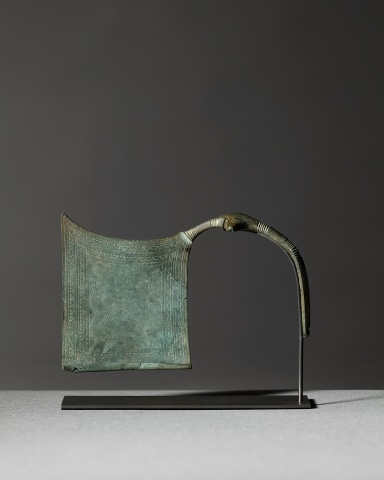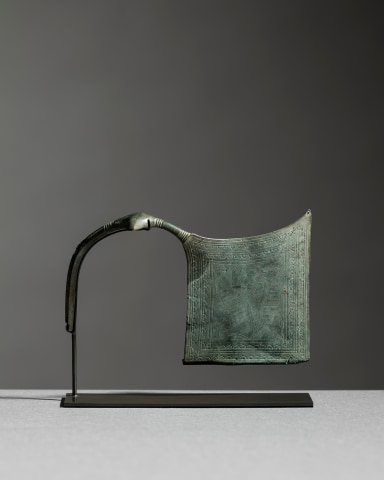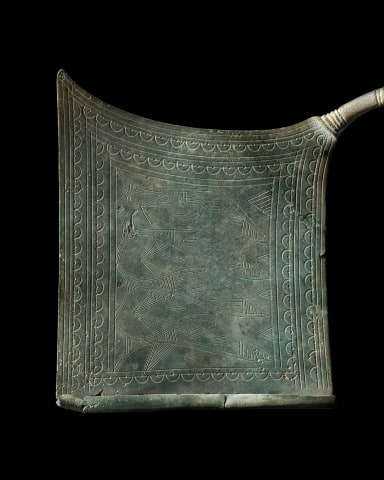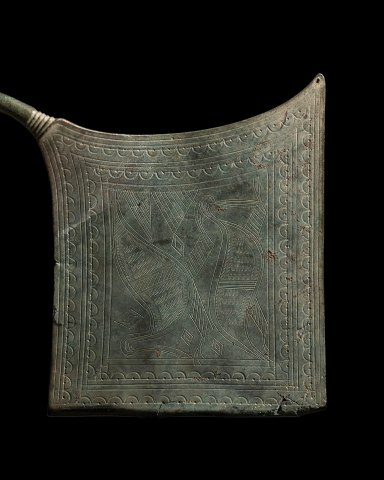Greek 'plate' fibula, Geometric Period, Peloponnese, 8th century BC
Bronze
Length: 11cm
11738 TA
Further images
Boeotian type fibula with a large incised plate, the front showing two stylised water fowl, their legs outstretched mid- run, their long thin beaks pointing downwards, their bodies decorated with...
Boeotian type fibula with a large incised plate, the front showing two stylised water fowl, their legs outstretched mid- run, their long thin beaks pointing downwards, their bodies decorated with vertical bands of fine zig-zags, and outlined with a border of the same. Diamonds and triangles fill the space. This central scene is bordered by a series of straight lines and bands of dotted semicircles. The reverse shows four fish facing right, the spaces between them, in the same manner as the front, the bottom edge folded upwards to catch the pin. The bow is decorated with bands of straight horizontal lines, and has a thick diamond-shaped element in the centre. The spring and pin missing, the surface with a light blue- green patina.
Fibulae appeared in the Aegean around 13th-12th century BC following a change in fashion in women’s clothing, whereby the new peplos (a heavy garment made of wool) needed to be held securely in place. Fine and complexly decorated fibulae, such as the present example, transcended being merely a pin and were considered to be pieces of jewellery. These fibulae were cast using the lost-wax method, and afterwards cold worked, with one end hammered out into a lozenged-shaped catch-plate.
The birds represent the air and the heavens, and are the overarching link between land and water, the latter of which is represented by the fish.
Fibulae appeared in the Aegean around 13th-12th century BC following a change in fashion in women’s clothing, whereby the new peplos (a heavy garment made of wool) needed to be held securely in place. Fine and complexly decorated fibulae, such as the present example, transcended being merely a pin and were considered to be pieces of jewellery. These fibulae were cast using the lost-wax method, and afterwards cold worked, with one end hammered out into a lozenged-shaped catch-plate.
The birds represent the air and the heavens, and are the overarching link between land and water, the latter of which is represented by the fish.
Provenance
Bruce McAlpine, London, UK
Howard Barnet Sr (1924-1992) and Saretta Barnet
(1927-2017), New York, USA; acquired from the above
3rd May 1977
Saretta Barnet Revocable Trust, New York, USA







